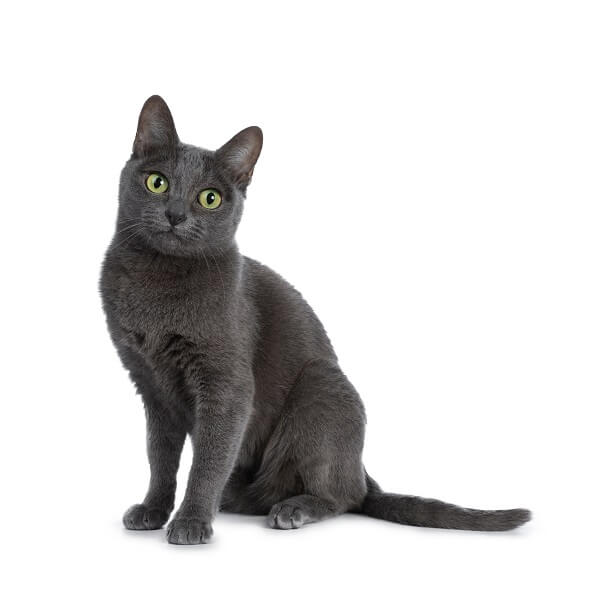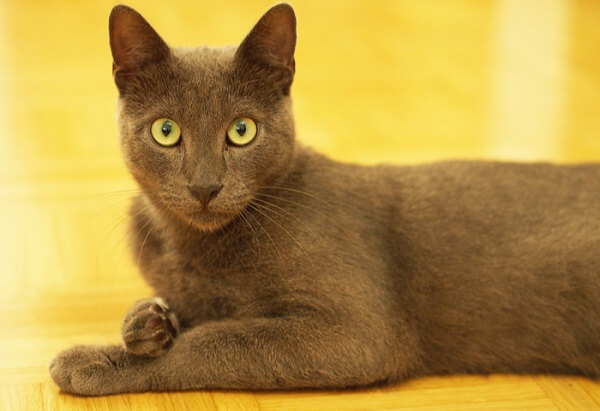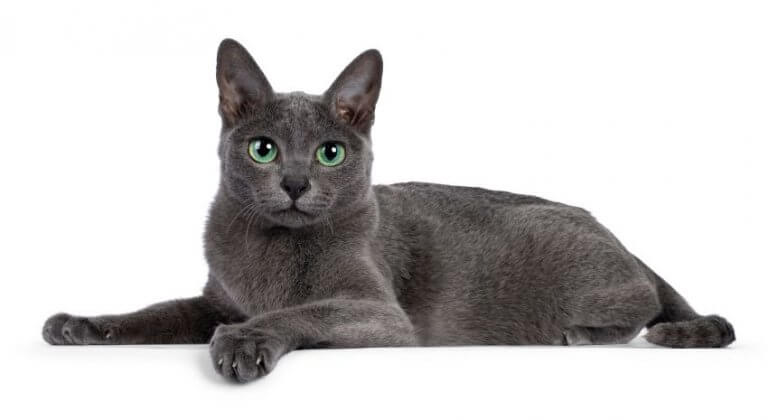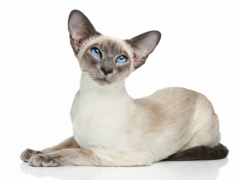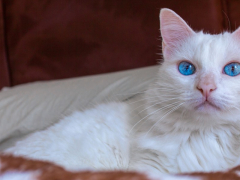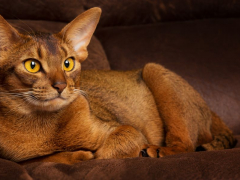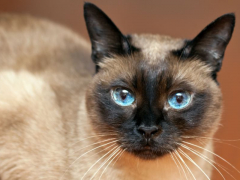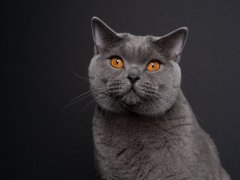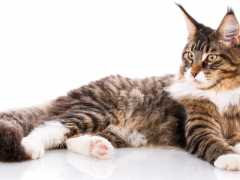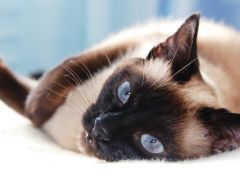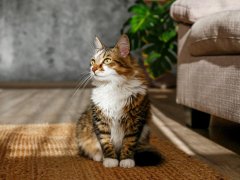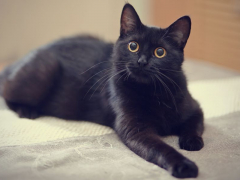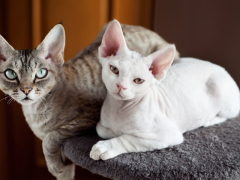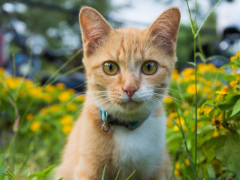Personality and Temperament
Stunning blue-gray fur is only the beginning: The Korat cat is considered to be a living good luck charm in it's native Thailand. Whether you're in search of good fortune or if you're simply hoping to grace your home with a loving, intelligent cat, the Korat may be the perfect pet! This is among the rarest of all cat breeds, so you’ll certainly count yourself fortunate when you find the perfect Korat kitten to spoil.
Korat cats are closely related to Siamese, and share some of their cousin's most endearing personality traits. These kitties love attention, and they enjoy being involved in every aspect of household management: Whether you're fixing lunch, cleaning up after dinner, folding laundry, or catching up on your favorite show, the Korat cat will be on hand to offer advice and a helping paw.
A little less chatty than the Siamese, the Korat might greet you a chirping meow or give you an insistent tap when you aren't offering quite enough attention.
Playful and friendly, Korat cats tend to get along well with everyone including kids, other cats, and well behaved dogs. Fun and games make this cat's world go round, and the more you interact, the happier your relationship will be. Once playtime is over, the Korat cat will eagerly snuggle up next to you.
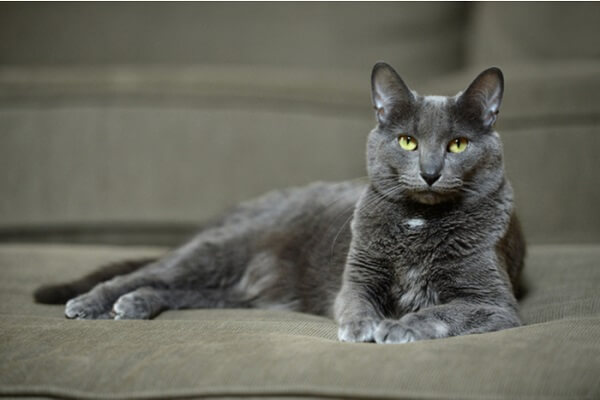
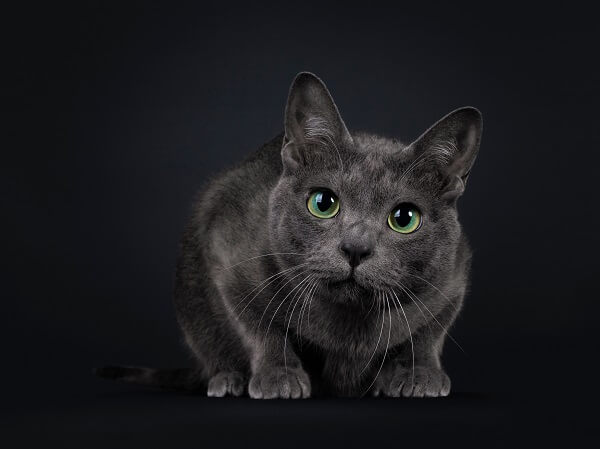
Care
Nutrition
Grooming
Exercise
Health
Korat cats have no special nutritional needs, however they thrive on a high-protein diet without a lot of added carbs. These cats look and feel their best when high-quality food with real meat or real fish as the first ingredient is the mainstay of their diet. If you are able, consider offering your cat a fresh diet.
Korat cats have short, easy-care fur that doesn't require much attention from their human companions. Consider brushing your cat once a week to remove loose hair and reduce shedding, and follow up with a quick polish using a chamois or a silk scarf to bring out the shine in their gorgeous gray coat.
Consider your home the Korat's personal playground! These cats love to run, jump, and climb. Tall cat trees, scratching posts, and plenty of toys help save your favorite belongings from damage while providing your cat with safe, socially acceptable ways to meet their physical activity needs.
Korat cats appreciate interaction from their human and animal companions. For those times when you are not available to play fetch or dangle a feather wand for your kitty, consider food puzzles and other engaging toys. Without appropriate methods of mental stimulation, these intelligent cats quickly find ways to amuse themselves, getting into cupboards and drawers and playing with your belongings.
Korat cats are generally healthy, however they are sometimes born with a fatal genetic condition called gangliosidosis, which disrupts normal cellular function and ultimately causes damage to the central nervous system. Cats with GM1 gangliosidosis show signs of neurologic disease including impaired vision and seizures by about three months of age, and are not likely to survive past their first year.
Korat cats with GM2 gangliosidosis typically show neurologic signs at an age as early as four weeks, and typically do not survive past the age of eight months.
Fortunately, reputable Korat breeders are able to test parents, greatly reducing the likelihood that offspring will be affected by this terrible genetic disease.
History
Natives of Phimai, Thailand, Korat cats are named after the Nakhon Ratchasima province, which is nicknamed Korat by the people of Thailand. Interestingly, the Korat cat is locally known as Si Sawat, which translates to "The color of sawat seed." Korat cats are first mentioned in the Thai Tamra Maew, also known as The Cat-Book Poems, which features entries that were written beginning as early as 1350 CE.
Until recently, Korat cats were only given away as gifts; they were never sold. At times, they were gifted to important community members as a sign of respect and appreciation. Korat cats eventually made their way to Britain, where they were called Blue Siamese. Since these cats did not conform to Siamese standards, they were sometimes shown in Russian or "Any Other Blue" classes. A cat breeder named Mrs. B. Spearman had a deep appreciation for these graceful feline and attempted to import more of them into England, but was unsuccessful.
Korat cats appeared in the West again when Cedar Glen Cattery imported a breeding pair to the US in 1959. CFA granted the Korat cat championship status in 1966 and today, these incredible cats are recognized by breed registries worldwide.
Most registries only recognize Korat cats with short, single coats that feature hairs with light silver blue roots and deeper blue hair shafts that lighten again to silver at the tips. The Governing Council of the Cat Fancy now recognizes Korat-type cats in solid lilac color, Colorpoint blue, and lilac Colorpoint, respectively known as Thai Lilac, Thai blue Point, and Thai Lilac Point.
Even though these cats are incredibly desirable, the Korat remains notoriously difficult to find.
